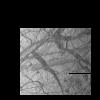|
Your search criteria found 220 images Target is europa |
| My List |
Addition Date
|
Target | Mission | Instrument | Size |

|
1998-02-04 | Europa |
Galileo |
Solid-State Imaging |
1259x556x3 |

|
|||||

|
1998-02-04 | Europa |
Galileo |
Solid-State Imaging |
1160x930x1 |

|
|||||

|
1998-02-04 | Europa |
Galileo |
Solid-State Imaging |
885x1415x1 |

|
|||||

|
1998-01-21 | Europa |
Galileo |
Photopolarimeter-Radiometer |
987x1459x3 |

|
|||||

|
1997-12-18 | Europa |
Galileo |
Solid-State Imaging |
2666x2000x3 |

|
|||||

|
1997-12-18 | Europa |
Galileo |
Solid-State Imaging |
639x714x1 |

|
|||||

|
1997-12-18 | Europa |
Galileo |
Solid-State Imaging |
365x563x1 |

|
|||||

|
1997-12-18 | Europa |
Galileo |
Solid-State Imaging |
800x800x1 |

|
|||||

|
1997-12-16 | Europa |
Galileo |
Solid-State Imaging |
1623x1940x1 |

|
|||||

|
1997-12-16 | Europa |
Galileo |
Solid-State Imaging |
1710x1845x1 |

|
|||||

|
1997-12-10 | Europa |
Galileo |
Solid-State Imaging |
807x920x3 |

|
|||||

|
1997-11-18 | Europa |
Galileo |
Solid-State Imaging |
2000x1000x3 |

|
|||||

|
1997-09-07 | Europa |
Galileo |
Solid-State Imaging |
1024x1024x3 |

|
|||||

|
1997-09-07 | Europa |
Galileo |
Solid-State Imaging |
630x325x1 |

|
|||||

|
1997-09-07 | Europa |
Galileo |
Solid-State Imaging |
793x794x3 |

|
|||||

|
1997-09-07 | Europa |
Galileo |
Solid-State Imaging |
968x452x1 |

|
|||||

|
1997-09-07 | Europa |
Galileo |
Solid-State Imaging |
1070x868x1 |

|
|||||

|
1996-09-26 | Europa |
Voyager |
VG ISS - Narrow Angle |
704x680x3 |

|
|||||

|
1996-08-09 | Europa |
Voyager |
400x400x3 | |

|
|||||

|
1996-08-09 | Europa |
Voyager |
Near Infrared Camera |
1500x2000x3 |

|
|||||

|
 |
 |
 |
|
| 1-100 | 101-200 | 201-300 |
| Currently displaying images: 201 - 220 of 220 |